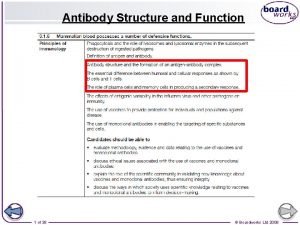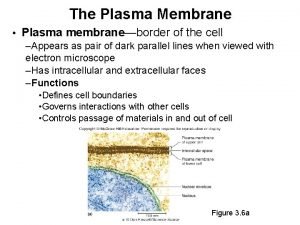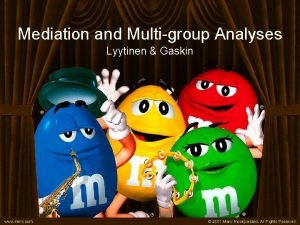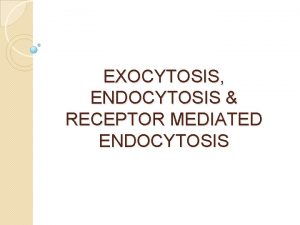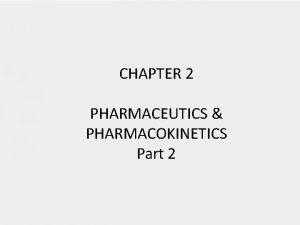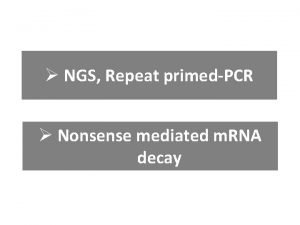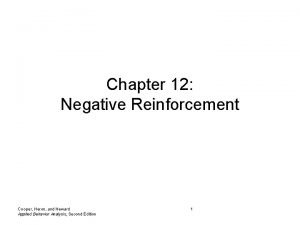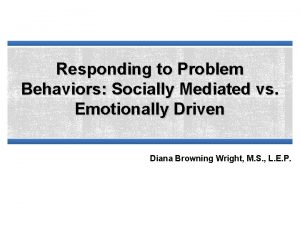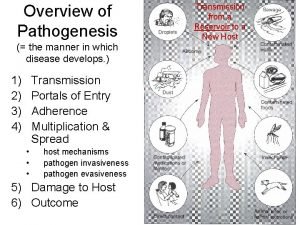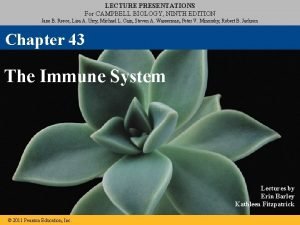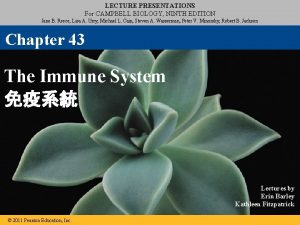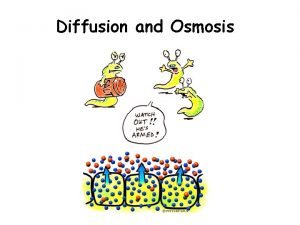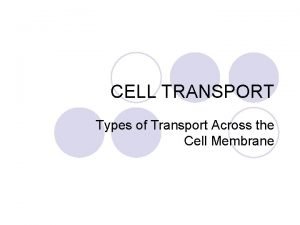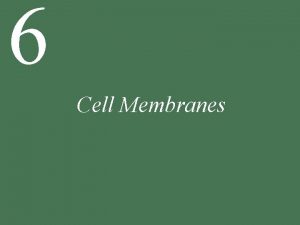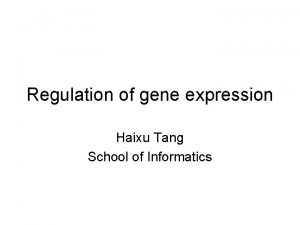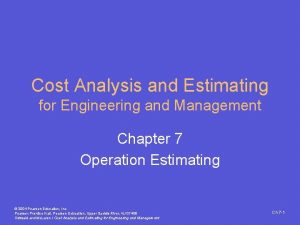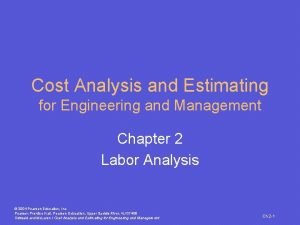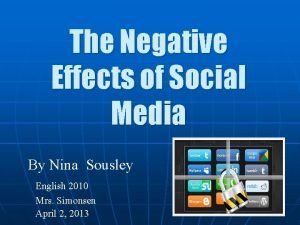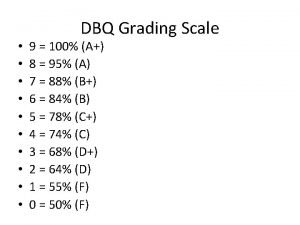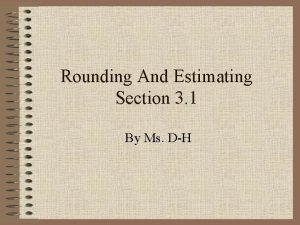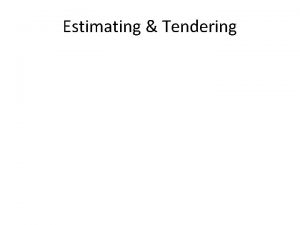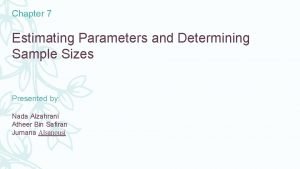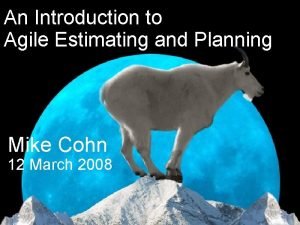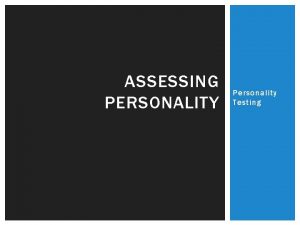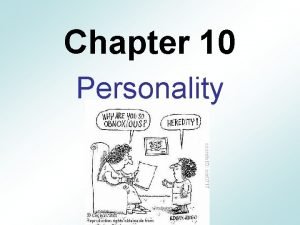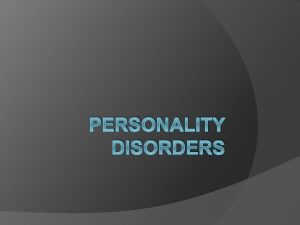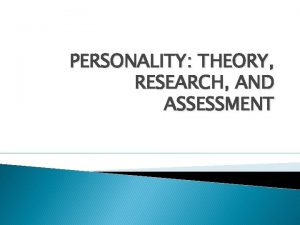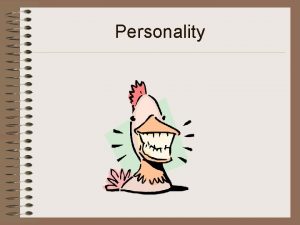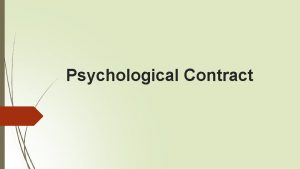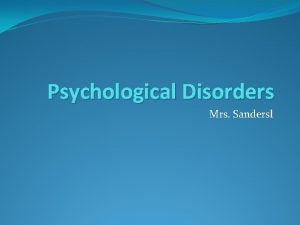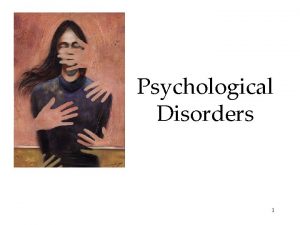Estimating Mediated Effects of Personality and Social Psychological

































- Slides: 33

Estimating Mediated Effects of Personality and Social Psychological Processes Patrick E. Shrout, Ph. D. NYU Niall Bolger, Ph. D. Columbia U SPSP 2010 1

An Example: Feeling Excluded • Bernstein, Sacco, Brown, Young & Claypool (JESP, 2009) Randomly assigned Ss to write about exclusion experience or another experience Ø Measured self esteem, belonging, control, & meaningful existence Ø Measured preference to 20 faces Ø • Duchenne smiles involving two muscle groups • Non-Duchenne smiles involving one voluntary muscle group • Summarized results as difference score SPSP 2010 2

Exclusion affected face perception • Those writing about exclusion were more likely to prefer “genuine” smiles to possibly staged smiles. • BUT WHY? Ø Self esteem seemed to mediate the Exclusion effect Ø “The fact that self-esteem alone fully mediated the effect warrants further discussion. Self-esteem is the mechanism by which Sociometer Theory operates (Leary et al. , 1995). In this model, self-esteem acts as a gauge of belongingness, and when a threat occurs, individuals take actions to ameliorate that threat. ” Bernstein et al, (2009) • Theory was tested using Baron & Kenny mediation model SPSP 2010 3

B&K(1986) Step 1: Find an effect to explain X c e Y M • Bernstein et al (2009) showed that Exclusion led to increased preference for natural smiles. Ø c=0. 26 SPSP 2010 4

B&K(1986) Step 2: Show X is related to mediator Y X a e. Y M e. M • Bernstein et al showed that Exclusion was related to M: Self-esteem was lower in the exclusion condition. Ø a = -. 88 SPSP 2010 5

B&K(1986) Step 3: Show M is Related to Y Y X M b e. Y e. M • ADJUSTING for X, M must be related to Y • Bernstein et al reported b= -0. 11. Ø Increased self esteem decreased interest in natural smile, adjusting for Exclusion SPSP 2010 6

B&K(1986) Step 4: Test the indirect effect Y X a M b e. Y e. M • Indirect effect is quantified by the product a*b Ø Formal test by Sobel test, joint-significance test, bootstrap confidence interval • Bernstein et al found indirect path was significant using Sobel test SPSP 2010 7

B&K (1986) Step 5: Distinguish Full from partial mediation X C’ Y e. Y M e. M • Test direct effect, c’, while adjusting for M. • The adjusted (direct) effect in Bernstein example was c’=0. 18, which was not significantly different from zero Ø Authors interpreted result as Full Mediation SPSP 2010 8

Mediation and Theory Construction • When mediation is complete, researcher has “explained the effect” Ø Other explanations apparently not needed Ø Often those other explanations not tested • Bernstein et al. (2009) did test theorydriven alternate mediators based on Williams (2007) Ø Self SPSP 2010 esteem vs. belonging, efficacy needs 9

Some Vexing Problems • Claiming complete mediation is too easy If the total effect is just significant, not much reduction is needed to make adjusted direct effect nonsignificant Ø Multiple mediators are often of theoretical interest but not usually tested Ø • Estimates of indirect effects are often biased If based on mediators that are measured with error Ø If based on wrong model Ø SPSP 2010 10

Model Specification • Baron and Kenny (1986) assume model is correct • What does this entail? Ø Causal paths are interpretable Ø Variables are measured without error Ø Residual (error) values uncorrelated • Implies that important causes are represented SPSP 2010 11

Causal Pathways and Time • Causal Assumptions in Mediation ØX is prior to M and Y Ø Change in X is associated with change in M Ø Change in M is associated with change in Y Ø Measurements taken at times that reflect causal action C’ X a M Y e. Y b e. M SPSP 2010 12

Causal Pathways and Time • Causal Assumptions in Mediation ØX is prior to M and Y Ø Change in X is associated with change in M Ø Change in M is associated with change in Y Ø Measurements taken at times that reflect causal action C’ X a M Y e. Y b e. M SPSP 2010 13

Causal Pathways and Time • Causal Assumptions in Mediation ØX is prior to M and Y Ø Change in X is associated with change in M Ø Change in M is associated with change in Y Ø Measurements taken at times that reflect causal action C’ X a M Y e. Y b e. M SPSP 2010 14

Causal Pathways and Time • Causal Assumptions in Mediation ØX is prior to M and Y Ø Change in X is associated with change in M Ø Change in M is associated with change in Y Ø Measurements taken at times that reflect causal action C’ X a M Y e. Y b e. M SPSP 2010 15

Causal Pathways and Time • Causal Assumptions in Mediation ØX is prior to M and Y Ø Change in X is associated with change in M Ø Change in M is associated with change in Y Ø Measurements taken at times that reflect causal action C’ X a M Y e. Y b e. M SPSP 2010 16

Inferring Within-Person Change from Between-Person Data • Systematic consideration of time draws us to psychological process Within person changes Ø Effects of manipulations on persons Ø • Traditional designs substitute between person differences for within person change Justified in experiments Ø Harder to justify in surveys Ø • In nature, between person associations are rarely the same as within person associations SPSP 2010 17

Revisiting Bernstein et al. (2009) • Randomized design makes temporal order clear X->Y: Exclusion experience (randomized) was related to face preference Ø X->M: Exclusion was also related to Ø • Self esteem (apparent mediator) • Efficacy needs (not found as mediator) • M->Y: Temporal relation of self-esteem and face preference not clear Ø What might contribute the correlation between M & Y? SPSP 2010 18

Possible Between Person Confounding of M->Y X 1 M 2 G Y 3 SPSP 2010 19

If “third variable” is ignored, error terms are correlated X 1 M 2 However, the correlation can not be estimated in traditional Baron & Kenny Mediation model. SPSP 2010 Y 3 20

Baseline Measures Can Reduce Confounding X 1 a M 1 Design adds within person information so that change can be estimated. c' M 2 g 1 rmy b Y 1 SPSP 2010 g 2 Y 3 21

But most ignore baseline • What are implications? Ø Total effect (c) is not biased. Ø Effect on M (a) is not biased. Ø BUT Effect of M on Y may be biased • The more stable the processes (g 1, g 2), the more the bias for nonzero correlations of M and Y. X • The more the correlation of c' baseline M and Y the more a M M the bias for stable processes. 1 1 2 g 1 rmy b Y 1 SPSP 2010 Y 3 g 2 22

Quantifying Bias: A Numerical Example X 1 Direct effect. 28 . 70 M 1 Indirect effect. 28 M 2 g 1 rmy . 40 Y 1 SPSP 2010 g 2 Y 3 23

If we ignore baseline, what do we estimate as indirect effect? g=. 8 X 1 g=. 6 g=. 4 g=. 2 g=. 0 M 1 M 2 g 1 rmy b Y 1 SPSP 2010 c' a Y 3 g 2 24

Quantifying Bias for Direct Effects g=. 0 g=. 2 g=. 4 g=. 6 g=. 8 SPSP 2010 25

Extensions • Will correlations of M and Y error terms also cause problems in cross-sectional studies? Ø You betcha! Ø The M->Y path needs to approximate within person change. Ø Additional covariates will be needed Ø But see Cole and Maxwell (2005) about plausibility of cross sectional models SPSP 2010 26

Objections • What if taking baseline measures in experiments would prime processes that are left un-primed? Ø Often possible to estimate Corr(M, Y) and the stability of M and Y in separate samples Ø Combining the data from the two samples will require structural equation methods. SPSP 2010 27

Conclusions • Social psychology theory is ready for next generation mediation analysis Ø Will aid in communication with other scientists Ø Will refine thinking about process • Combination of new heuristic steps and systematic thinking about process will serve us well SPSP 2010 28

Time for a Ten Step Program? 1) *Argue that X can be a causal agent of Y 2) Show that X is related to Y. 3) Show that X is related to M, the mediator 4) *Show that M is measured with little error. 5) *Identify plausible competing mediators and include them in the model 6) Show that M is related to Y adjusting for X 7) *Adjust for correlation between M and Y that is prior to causal process 8) Show that indirect path (X->M->Y) is present 9) Estimate/test direct effect of X->Y after adjusting for M. 10)*Report ratio of mediated effect. If it is nearly 1 then claim full mediation. SPSP 2010 29

Time for a Ten Step Program? 1) *Argue that X can be a causal agent of Y 2) Show that X is related to Y. 3) Show that X is related to M, the mediator 4) *Show that M is measured with little error. 5) *Identify plausible competing mediators and include them in the model 6) Show that M is related to Y adjusting for X 7) *Adjust for correlation between M and Y that is prior to causal process 8) Show that indirect path (X->M->Y) is present 9) Estimate/test direct effect of X->Y after adjusting for M. 10)*Report ratio of mediated effect. If it is nearly 1 then claim full mediation. SPSP 2010 30

Time for a Ten Step Program? 1) *Argue that X can be a causal agent of Y 2) Show that X is related to Y. 3) Show that X is related to M, the mediator 4) *Show that M is measured with little error. 5) *Identify plausible competing mediators and include them in the model 6) Show that M is related to Y adjusting for X 7) *Adjust for correlation between M and Y that is prior to causal process 8) Show that indirect path (X->M->Y) is present 9) Estimate/test direct effect of X->Y after adjusting for M. 10)*Report ratio of mediated effect. If it is nearly 1 then claim full mediation. SPSP 2010 31

Help from our friends • Margarita Krochik • Turu Stadler • Couples lab members at NYU and Columbia • Grant R 01 -AA 017672 from NIAAA SPSP 2010 32

References • • • Baron, R. M. , & Kenny, D. A. (1986). The moderator-mediator variable distinction in social psychological research: Conceptual, strategic and statistical considerations. Journal of Personality and Social Psychology, 51, 1173 -1182. Bernstein, M. J. et al. (2009). A preference for genuine smiles following social exclusion. Journal of Experimental Social Psychology, doi: 10. 1016/j. jesp 2009. 08. 010. Cole DA, Maxwell SE. (2003). Testing mediational models with longitudinal data: questions and tips in the use of structural equation modeling. J. Abnormal Psychology, 112: 558– 577. Gollob, H. F. & Reichardt, C. S. (1987). Taking account of time lags in causal models. Child Development, 58(1), 80 -92. Kraemer, H. , Kiernan, M. , Essex, M. , & Kupfer, D. J. (2008). How and why criteria defining moderators and mediators differ between the Baron & Kenny and Mac. Arthur approaches. Health Psychology, 27(2, Suppl), S 101 -S 108 Mac. Kinnon DP (2008). Introduction to statistical mediation analysis. New York: LEA Maxwell, S. E. , & Cole, D. A. (2007). Bias in cross-sectional analyses of longitudinal mediation. Psychological Methods, 12(1), 23 -44. Shrout, P. E. (in press). Integrating causal analysis into psychopathology research. In Causality and Psychopathology: Finding the Determinants of Disorders and their Cures. P. E. Shrout, K. Keyes, K. Ornstein (Eds). New York: Oxford U. Press. Spencer, S. J. , Zanna, M. P. & Fong, G. T. (2005). Establishing a causal chain: Why experiments are often more effective than mediational analyses in examining psychological processes. Journal of Personality and Social Psychology, 89(6), 845 -851. 2010 SPSP 33
 The difference between humoral and cell mediated immunity
The difference between humoral and cell mediated immunity Meaning of dynamic personality
Meaning of dynamic personality Carrier mediated transport
Carrier mediated transport Mediated vs moderated
Mediated vs moderated Bulk transport
Bulk transport Transcellular diffusion
Transcellular diffusion Nonsense mediated decay
Nonsense mediated decay Eo for negative reinforcement
Eo for negative reinforcement Socially mediated positive
Socially mediated positive Receptor mediated endocytosis
Receptor mediated endocytosis Cell mediated immunity
Cell mediated immunity Cell mediated immunity
Cell mediated immunity K+ pump
K+ pump Mediated values essay examples
Mediated values essay examples Receptor - mediated endocytosis
Receptor - mediated endocytosis Types of cellular transport
Types of cellular transport Agrobacterium mediated gene transfer
Agrobacterium mediated gene transfer Receptor - mediated endocytosis
Receptor - mediated endocytosis Fine area
Fine area Activator protein
Activator protein Cost analysis and estimating for engineering and management
Cost analysis and estimating for engineering and management Cost analysis and estimating for engineering and management
Cost analysis and estimating for engineering and management Cost analysis and estimating for engineering and management
Cost analysis and estimating for engineering and management Cost analysis and estimating for engineering and management
Cost analysis and estimating for engineering and management Cost analysis and estimating for engineering and management
Cost analysis and estimating for engineering and management Social thinking social influence social relations
Social thinking social influence social relations Social thinking social influence social relations
Social thinking social influence social relations Social media negative effects on society
Social media negative effects on society Dbq grading scale
Dbq grading scale Rounding and estimating
Rounding and estimating Tendering and estimating
Tendering and estimating Types of electrical engineering
Types of electrical engineering Estimating parameters and determining sample sizes
Estimating parameters and determining sample sizes Agile estimating and planning by mike cohn
Agile estimating and planning by mike cohn
